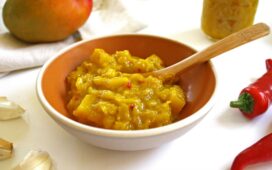How often do you drink coffee? Have you ever wondered where coffee comes from and the different types of coffee beans that exist? With so many varieties of coffee to choose from, it can get confusing.
The four main types of coffee beans are Arabica, Robusta, Liberica, and Excelsa. Each type has its own unique flavour profile and characteristics. Keep reading to learn more about these four coffee varieties to make your next coffee choice an informed one!
Arabica – The Most Popular Coffee
Arabica is by far the most popular and widely consumed coffee accounting for 60-70% of global coffee production. Arabica beans grow best in tropical highland climates, at altitudes over 600 metres. They require cool temperatures, steady rainfall, and shade to yield the highest quality beans.
The Arabica plant is relatively small and easy to prune and care for. However, it is also quite delicate and susceptible to various diseases. When grown in optimal conditions, Arabica produces a smooth coffee with sweet overtones and high acidity. It also has almost half the caffeine of other coffee varieties.
Arabica’s pleasant flavour profile makes it the preferred choice for high-quality coffees and coffee-based beverages. You will find Arabica beans used in many gourmet coffee blends as well as products like instant coffee. Their versatility and widespread availability is why Arabica is our bean of choice for coffee subscriptions here in the UK.
Robusta – The Hardy Coffee Plant
Robusta is the second most cultivated coffee type, accounting for about 30% of global production. As the name suggests, Robusta plants are incredibly hardy and resilient to pests, disease, drought, and other adverse conditions.
Robusta thrives in lowland, tropical climates and can grow at elevations up to 800 metres. It also gives higher yields per tree compared to the Arabica plant. These reasons make Robusta easier and cheaper to grow on a mass commercial scale.
In terms of flavour, Robusta packs a real caffeine kick – up to double the amount found in Arabica beans! It has a grain-like, peanutty taste often described as harsh. But it also has a smooth texture and slight chocolate undertones that work well with milk and sugar.
Robusta is less popular for artisanal coffee roasts. But its extreme hardiness and high caffeine content make it ideal for large-scale instant coffee production as well as commercial espresso blends.
Liberica – The Rarest Coffee Bean
Of all the coffee varieties, Liberica is one of the rarest. It accounts for less than 2% of commercially grown coffee worldwide. Native to western Africa, Liberica plants can grow up to 18 meters tall!
The Liberica coffee cherry produces noticeably larger, irregularly shaped beans compared to other varieties. When roasted, Liberica beans give off an unusual, smoky aroma often described as fruity and floral.
Due to its scarcity, unique flavour, and atypical bean size, Liberica fetches higher prices amongst coffee connoisseurs. But it can be an acquired taste and hard to find outside specialty stores. So unfortunately, Liberica remains more of a novelty than a coffee staple for now.
Excelsa – Newly Classified Coffee
Excelsa coffee was previously considered a unique species but has since been re-categorized as a member of the Liberica family. It accounts for about 7% of commercially grown coffee globally.
Excelsa thrives in the same conditions as Liberica but has a distinctly different cup profile. It produces small, tapered beans that create a tart, fruity, and bright coffee with a medium body.
Most Excelsa coffee is grown in Southeast Asia. While not as common as Arabica or Robusta, Excelsa plays an important role in some regional coffee blends and exports.
Final Thoughts
So there you have it! A concise guide to the four main coffee species that fuel our global obsession. Now that you know their key traits, you can figure out your perfect coffee match. Be sure to browse our wide selection of freshly roasted coffee beans and brewing gear to refine your morning brew.







